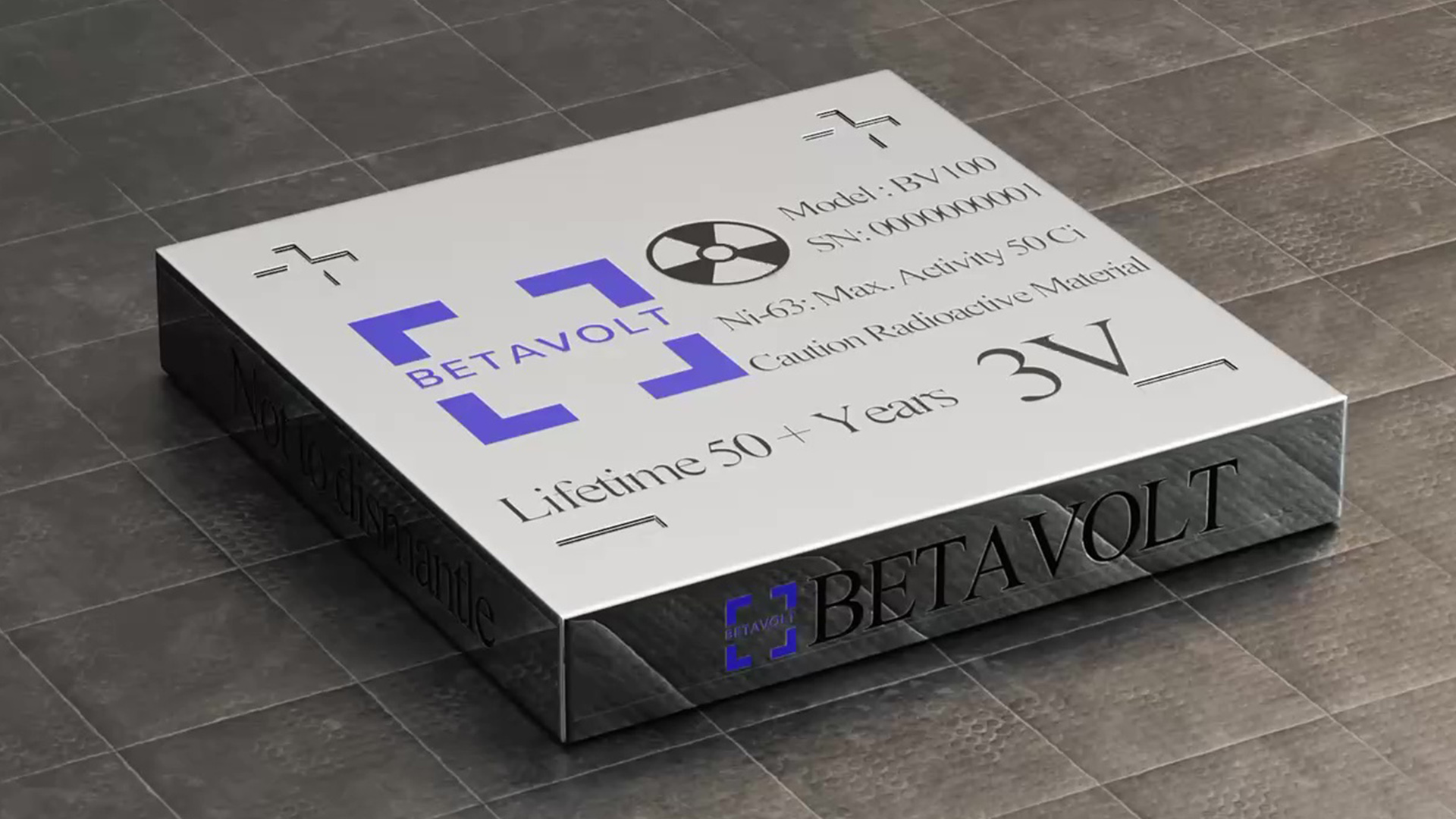Betavolt Technology claims to have successfully miniaturized atomic energy batteries, which measure less than a coin at 15 x 15 x 5mm. The compact battery uses 63 nuclear isotopes to generate 100 microwatts and a voltage of 3V of electricity through the process of radioactive decay.
The battery is currently in the pilot testing stage and Betavolt plans to mass-produce them for commercial devices like phones and drones, but also states nuclear batteries could be used for aerospace equipment, AI, medical equipment, advanced sensors, and micro-robots. The Beijing-based company claims to have drawn inspiration from devices such as pacemakers, and satellites.
Betavolt is planning to boost its tech to produce a 1-watt battery by 2025. And while it still has some way to go, the company seems confident stating development is way ahead of European and American scientific research institutions and enterprises.
Tiny nuclear batteries



Image credit: Betavolt
This technology could revolutionize electronics by removing the need for chargers or portable power banks altogether creating devices that run continuously and whose batteries do not degrade in terms of capacity and lifespan over charging cycles in the way Li-ion batteries do.
It could even prove to be safer too, as Betavolt states that the BV100 will not catch fire or explode in response to punctures or even gunshots, unlike some current batteries that can be unsafe if damaged or when exposed to high temperatures.
Such unlimited power could provide drones that fly continuously, phones that run constantly, and electric cars that don’t require recharging.
Currently nuclear batteries are used for spacecraft, underwater systems, automated scientific stations as well as crafts like the Mars rover, but they are large, heavy, and generate a lot of heat, as well as being expensive. However, Betavolt states that it uses a different approach.
How Betavolt’s radioactive battery works
To create the radioactive battery, Betavolt’s scientist used nickel-63, which is a radiactive element, as the energy source and then diamond semiconductors as energy converters.
The team developed a single-crystal diamond semiconductor that is just 10 microns thick, and then placed a 2-micron-thick nickel-63 sheet between two diamond semiconductor converters.
The decay energy of the radioactive source is then converted into an electrical current.
Betavolt claims the advantages of its atomic energy batteries are their lightweight, feature a long service life, as well as feature high energy density, and can work normally under extreme temperatures from -60 to 120-degrees Celcius.
Due to the modular design multiple atomic batteries could be connected to provide a higher energy output that could power automotive technology, as well as AI systems just to name a few.
Toxic reputation
Understandably most people wouldn’t want to carry nuclear material in their pocket; particular not viewers of HBO’s fantastic but chilling Chernobyl series. Many could be hesitant to adopt the widespread use of nuclear batteries due to the negative connotations of nuclear tragedies like the Chernobyl disaster in 1986 or the Fukushima nuclear accident in 2011.
However, the Betavolt also addressed the concerns about radiation, stating the battery is safe as it has no external radiation and is suitable for use in medical devices inside the human body like pacemakers and cochlea implants.
Betavolt says that after it has decayed the 63 nuclear isotopes become copper, which would be non-radioactive and not cause any environmental threat.
While it sounds like something from 1950s science fiction this technology could change the face of electronics by providing unwired, always-on devices that could be spell a new revolution in nuclear energy use.
This article was written by James Ide from TechRadar and was legally licensed through the DiveMarketplace by Industry Dive. Please direct all licensing questions to legal@industrydive.com.









